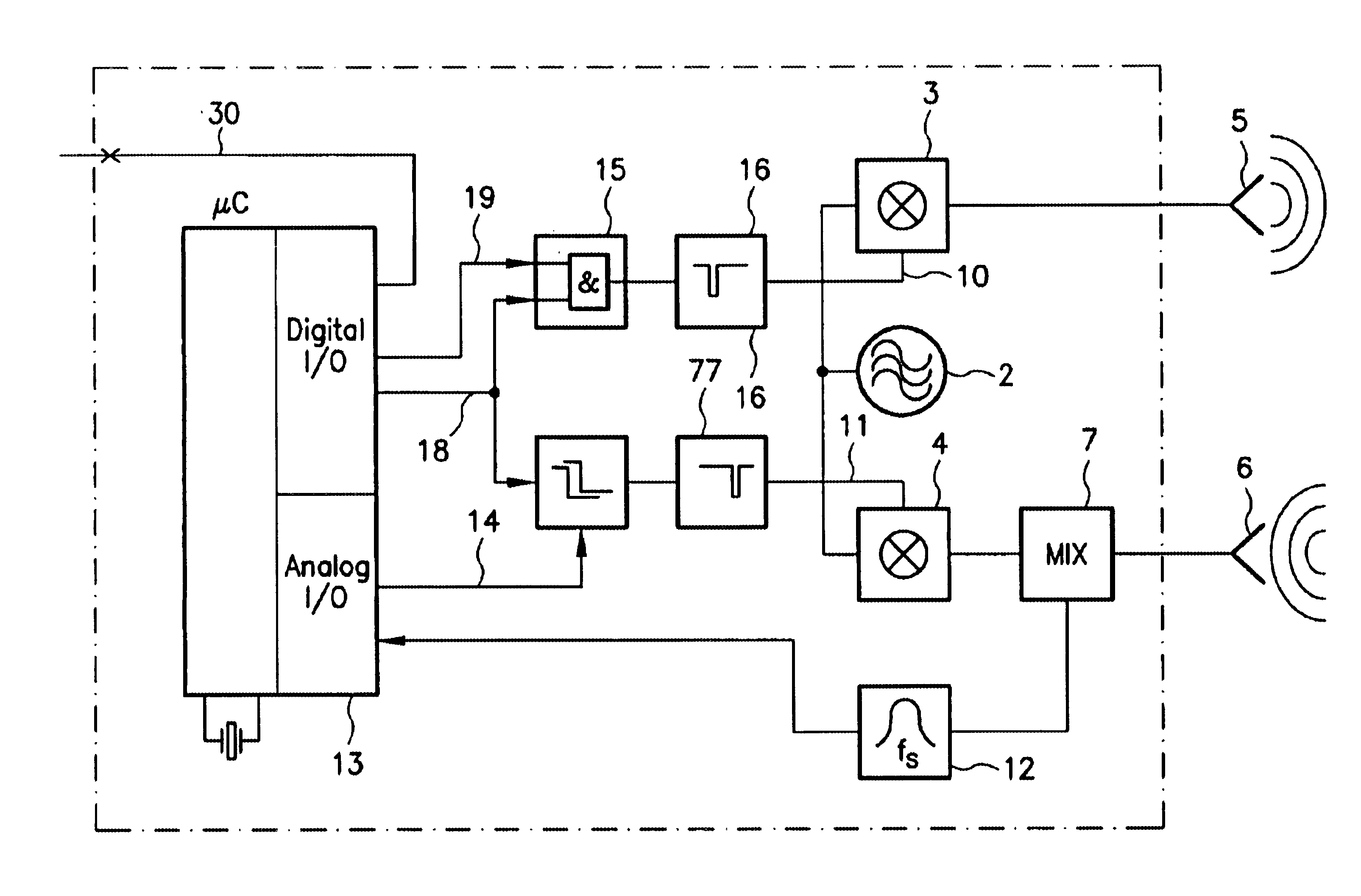Pulse-radar method and pulse-radar sensor and system
a pulse-radar sensor and pulse-radar technology, applied in the field of pulse-radar methods, can solve the problems of substantial interference immunity within the system, high bandwidth of srr radar pulses, etc., and achieve the effect of reducing the mutual interference of radar sensors, reducing the interference of simultaneously active radar sensors, and simple time-slot switching
- Summary
- Abstract
- Description
- Claims
- Application Information
AI Technical Summary
Benefits of technology
Problems solved by technology
Method used
Image
Examples
Embodiment Construction
[0026]As shown in FIG. 1, a microwave-carrier oscillator 2 in radar sensor 1 generates a carrier frequency. With the aid of trigger-pulse-controlled fast switches 3 and 4, in particular diode switches, oscillation packets are formed from the continuous signal of carrier oscillator 2. Via an antenna 5, the oscillation packet formed via switch 3 is emitted. After reflection at a possible obstacle, parts of this signal are picked up by receiving antenna 6 and conveyed to a mixer 7. This mixer 7 mixes the oscillation packet formed via switch 4 with the incoming signal. Mixer 7 provides an output signal 8 if the received and the sampling signal (via switch 4) coincide in time. With the aid of a controllable pulse delay 9, the sampling pulse is delayed with respect to the transmission pulse, due to the fact that trigger pulse 11 for switch 4 is conveyed via pulse delay 9, whereas trigger pulse 10 reaches switch 3 without a delay. The control of pulse delay 9 is implemented by a control vo...
PUM
 Login to View More
Login to View More Abstract
Description
Claims
Application Information
 Login to View More
Login to View More - R&D
- Intellectual Property
- Life Sciences
- Materials
- Tech Scout
- Unparalleled Data Quality
- Higher Quality Content
- 60% Fewer Hallucinations
Browse by: Latest US Patents, China's latest patents, Technical Efficacy Thesaurus, Application Domain, Technology Topic, Popular Technical Reports.
© 2025 PatSnap. All rights reserved.Legal|Privacy policy|Modern Slavery Act Transparency Statement|Sitemap|About US| Contact US: help@patsnap.com



